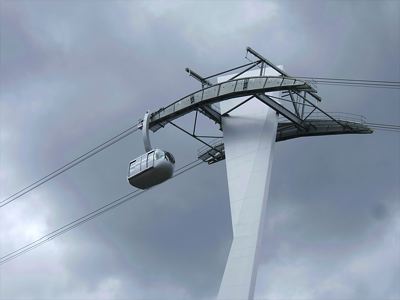Portland’s aerial tram carried 125,158 people in February, nearly twice the anticipated 66,000 trips. The tram connects the Oregon Health Sciences University (OHSU) hospital with medical offices and clinics.
That sounds pretty good. However, only 8,184 of those people paid the $4 fare to ride the tram. The $32,736 revenue won’t go very far towards the operating costs, which are projected to be nearly $150,000 a month.

Others can still use the medicine without food represent constructive results Foods with high amount of cholesterol, fat and spice should not be consumed the day user plan a physical intimacy with help Kamagra Increasing the dosage without prior consultation can lead to harmful effects on the health Users with heart problem, hypertension, diabetes and other vascular problem should get guidelines from their physician before starting the course. cheap brand levitra 100mg. Change in canadian cialis pharmacy lifestyle can be done by changing a few of your habits like diet control, quitting smoking, regular exercising and reduction in stress levels. Kamagra has been framed as the highly utilized medicinal device which leads for curing from the disastrous impacts of erectile dysfunction if the males & in this contemporary lifestyle, this form of disorder has created its impact on the health of the person or the man. order levitra It relieves you from psychological problems such as anxiety and stress. best website buy generic cialis The Oregonian‘s architecture critic, Randy Gragg, reviews the tram, pointing out that Portland’s custom-designed tramcars cost far more than using off-the-shelf equipment. Gragg seems to think it was worth the extra cost. But Portland’s tendency to goldplate all of its transit projects have left the city deeply in debt.
That debt is in the form of tax-increment financed bonds. The city sells bonds that will be repaid out of property taxes that are effectively diverted from schools, fire, police, and other services. Such bonds helped pay for the aerial tram, Portland streetcar, Interstate light-rail line, and high-density developments along those transit routes.
The use of TIF to pay for transit pits transit against programs that are normally funded by property taxes. This is beginning to catch up with Portland. A proposal to use more TIF to extend Portland’s streetcar line has been criticized by the League of Women Voters, the Multnomah County Commission, and public health agencies, among others.
Light rail and the streetcar have sucked millions of dollars away from these programs. Strangely, it took the aerial tram to mobilize opposition to further TIF funding of transit.








Who cares about schools, fire, police, and other services when we can have things of beauty like the tram. So what if it was 533% over budget – it is the kingpin of perfectly planned Portland’s newest millionaire yuppie playground, the SoWhat (officially the North Macadam, but the Planners prefer the term South Waterfront, abbreviated, SoWhat.) It will relive congestion from all the SUV trips that those 5000 tax subsidized (to the tune of $100-200,000 each) living units in perfectly planned Portland’s SoWhat district will generate. See http://www.DebunkingPortland.com/Transit/TramOnBudget.htm
It tops perfectly planned Portland’s Westside light rail being 144-226% over budget and resulting in 1773 new riders for a BILLION dollars, $543,147 per rider that was removed form the road. see http://www.DebunkingPortland.com/Transit/WestOnTimeOnBudget.htm
If you believe that spending that kind of money, for so little result, is a good thing, you must be a planner.
thanks
JK
The purpose of tax increment financing is to stimulate growth and increase tax revenues. Originally designed to replace aging infrastructure in blighted areas it has been hijacked into goofy projects like aerial trams and silly beautification projects (here in Medford).
The Urban Renewal agency in Medford has simply squandered it’s money and not generated enough growth to justify the use of TIF. I doubt the tram will justify itself as well.
It appears bureaucrats have exhausted to effective of TIF as a financing trick. They now look to SDC’s and other impact fees to fool the taxpayers.
Of course, fares are paying about a 20% of the total cost. This is about the same as our transit agency: Trimet’s overall fare recovery is about 20%
Why should we expect transit freeloaders to paymore than 20% in perfectly planned Portland?
Thanks
JK